“But the body is also directly involved in a political field; power relations have an immediate hold upon it; they invest it, mark it, train it, torture it, force it to carry out tasks, to perform ceremonies, to emit signs.”-Michel Foucault
By Rodolfo Andaur | Images courtesy the artist
Undoubtedly, the body as a material, language and theme of contemporary art, is preceded by a social theory that has been used as a questioning of the vision of the human being according to conservative positions on the creativity of artists. In this sense, America, a territory altered by a dominant Eurocentric structure, is a space where the mixture of civilizations has massively increased new visions of the ‘cosmogonic connection’ between Europe and America.
The acculturations between these two realities persist and give rise to a series of poetics from which we can gather up incomparable aesthetics that border colonial domination, geographical landmarks and popular religiosity. All of them converge in a baroque that as a space of aesthetic reflection has resulted in a vision of the human being in the context of a Latin America that is still in a state of captivity.
Much has been written about the traces of the baroque style that stand out from the first moment of the ‘cosmogonic connection’ and which, incidentally, are still visible in a territory as decimated for Latin American political and social culture as Mexico. In strict rigor, this immense country has been the object of various reflections on the aesthetic canon in which it is immersed. A peculiar Mexican characteristic is its worldview, that which draws a mixture between the secularity and the divine. Almost all of its spaces have been adorned with symbols of domination, festivity and violence. It is through the urban patterns that we are able to understand the appearance of this incomparable Mexican aesthetic. Undoubtedly it is in these public spaces where the practice of the performance plays a fundamental role when addressing the ruling class and the traditional conservatives among other issues.
The performance is this practice in which the artist is allowed to become the author and the object in parallel. The materialization of intricate ideas found in the body, the sanctuary where that friction takes place that converts what we explore, invoke and trans-cultured into raw material. The body becomes a tool and a narrative at the same time.
From another perspective, the performative action as creative material also denatures certain dogmas we have built in society on some components of daily life. There are explorations among the performers that point to biographical, economic and ethnic questions that stand on the border between the artist and the public and make the spectator an active character of their action. The performance, indeed, makes the body an object and a signifier.
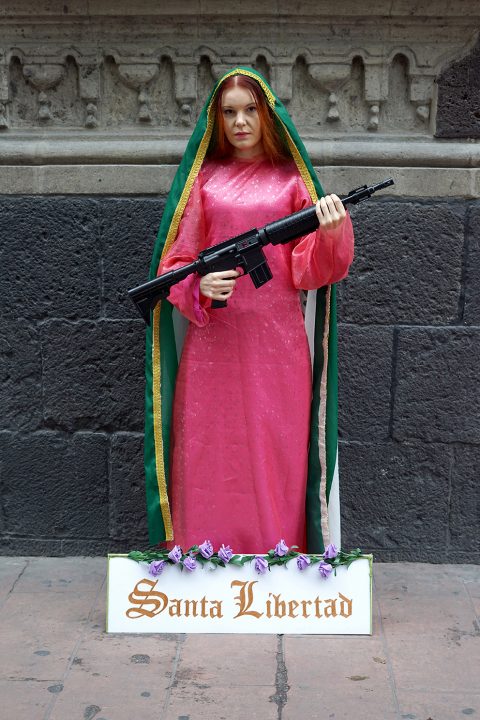
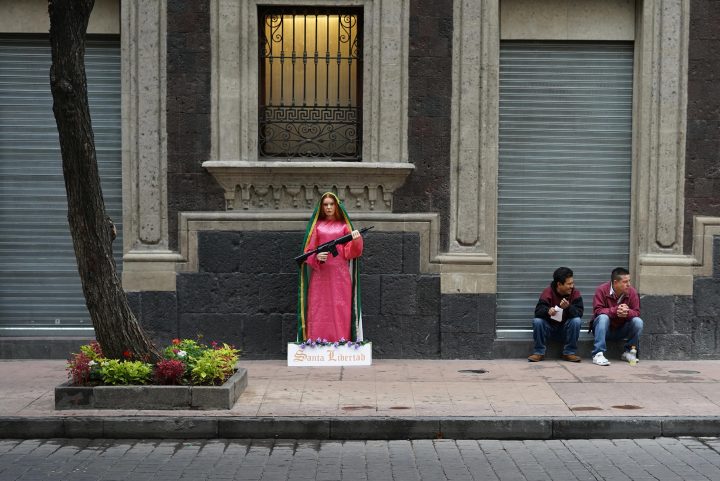
Now, the symbolic base to activate the performance in Mexico, has allowed its conception to be sustained by a ritual that involves a number of peculiarities already impregnated by Latin American culture. It seems that the very act of exploring the body, is a verb that articulated in a rite, is repeated in history, in the psyche and in the environmental phenomena.
It was from a ritualistic panorama that the Polish visual artist Julia Kurek established an exploration based on the territoriality and the landscapes of Mexico. Her residence also engages her in some social logics of a country that is anchored in certain images that move toward other visual and metaphorical expressions of mass culture.
Certainly the complexity of Mexican society is the starting point to juxtapose a couple of inescapable ideas that prevail in this culture. For this reason the artist’s work reaffirms the disturbance of her body by the powerful images that the Mexicans carry in their memory, in the context of the overwhelming stupor in which their increasingly violent and neoliberal society lives today.
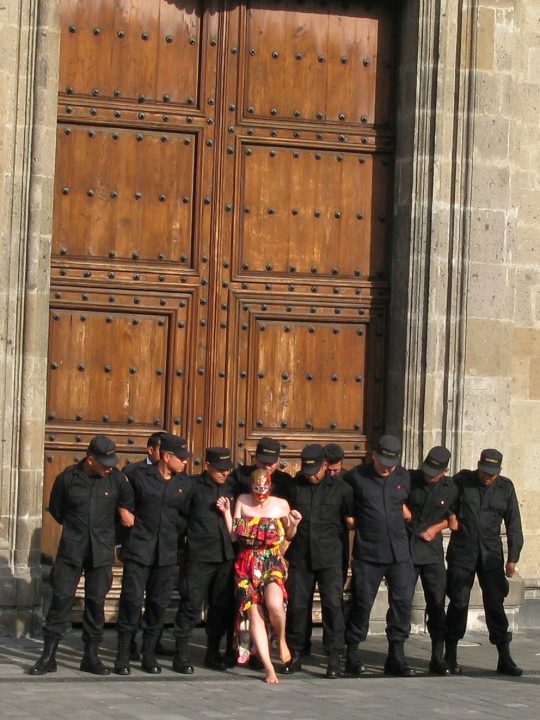
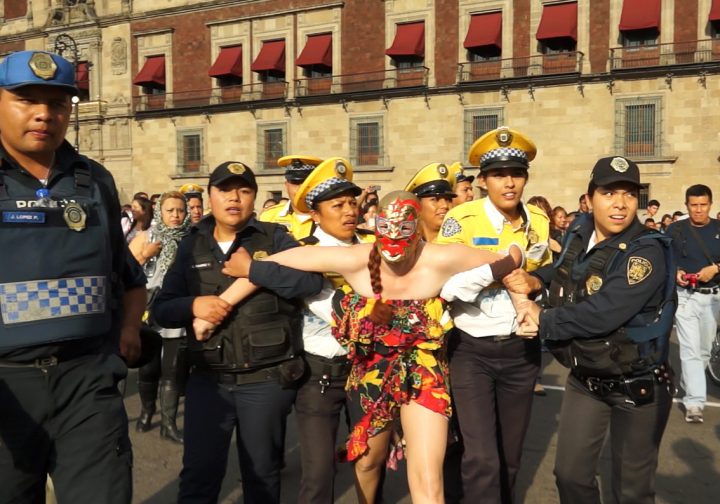
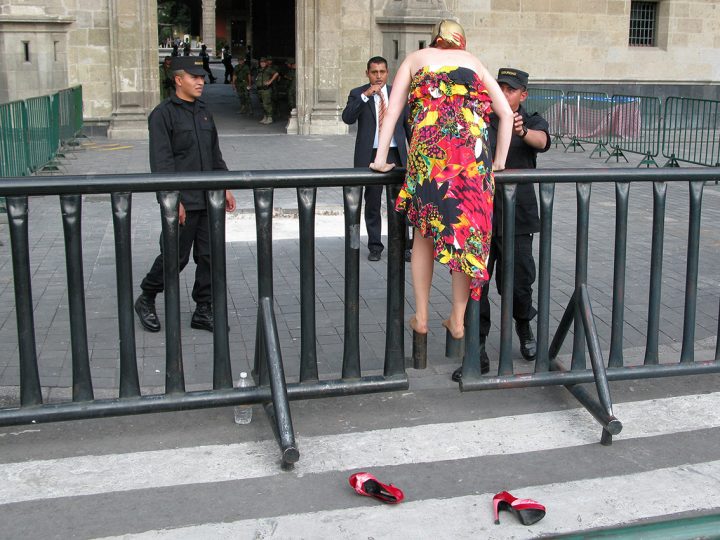
Within this exploration, the body of Kurek questions her worldviews, her truths and filiations. She makes a reading of the body from the power of visual culture. In front of body and power coupling we cannot overlook the statements written by Foucault. According to the philosopher, the body is submerged in a political field where we can establish various relationships with other bodies that can only act within connections of power. Moreover, for Foucault the body is a power manifested in various activities, such as religious and economic. That is why the ‘political field’ reacts to the configuration originated by certain images from popular culture. Some of them are the ones that generate unique ways of making fiction about their own power.
Mexico is a breeding ground for power images. Ancestral myths and current chronicles confirm the position of the image in Mexican culture. Then, when interlacing its interpretations from the body, it is obvious that it does not absorb those images that make it devotee of virgins, indigenism, cosmic spirits and nature. Together they form an amalgam that fosters a field research. In this way, Kurek has designed hidden spaces of creation which she has also used as a political field surrounded by the relations of dominance and submission of Mexican popular culture. In addition, in the public space, her body is displaced towards the limits of various sites that have been located, constructed and monitored, in order to effectively maintain a social control structure. In this case, the body -her body- entangles with the political and social imagery that has persisted in that society for centuries.
The close relationship between body and power through these proposals is undeniable. The artist outlines an extensive reading of the images we observe in mass culture. In fact, she is mixed with other images that are altering her mission, even more so when her action appears to sentence part of this research process. This is similar to what Foucault tells us when he says: “The body is also directly involved in a political field.”
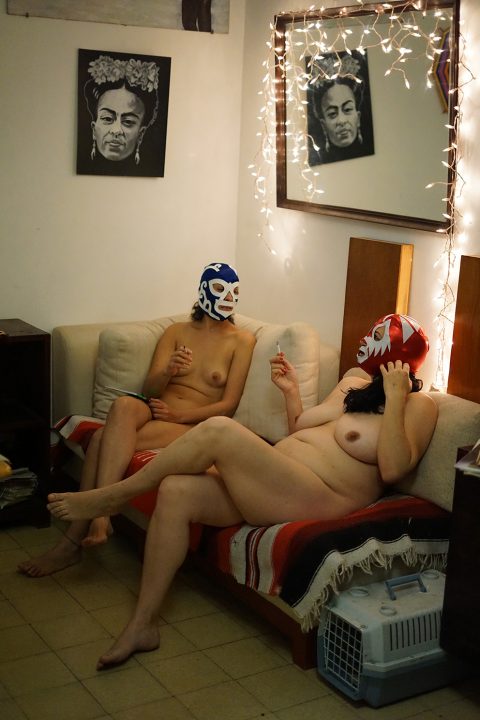
Both Julia Kurek and her artwork confirm the seduction of wrestlings, pagan images and media violence under which millions of Mexicans live. These are the assemblages that keep her in that territory to use her body as a catalyst for one or many messages. Undoubtedly, these crossings contain an extremely baroque ideal that resembles the past and the present of an indigenous, multicultural and unequal culture. Therefore, considering that this creation diagram crosses different languages, we can confirm that it is the obtained images that resize the specific site in which they have been produced for each of the actions that she has registered.
With this track record, it is very clear that the artist has privileged a creative process that articulates a consistent work material. In this sense, Kurek’s statements stand out because of the plurality she gives to mass culture perspectives. For example, she has designed dissimilar canonical images in the urban space, which are intercepted by objects that are strictly related to violence. In other cases, the nudes of the wrestling females are connected with the study of the political body originated by the Mexican culture. Along with the above, mention should be made of what the well-known Mexican video artist Sarah Minter said: “Every form of expression has to do with politics. You may be aware or not. Life is political. Art is political.”
Summing up, Julia Kurek challenges the value we give to visual culture, to popular image and mass culture. Her search mechanisms crash against the current information that turns around these lives and naturally, through these bodies. This remark to the way in which we observe an object-body condenses a feeling that arises from a social structure battered by capitalism, politics and social vehemence, something that not only happens in Mexico today, but also in several places in Latin America.
Project produced under the context of the R.A.T. residency (Residencias Artísticas Por Intercambio), directed by the anthropologist Danna Levin and the architect Sergio González.
*This text is part of the publication “Lucha Libre” a project produced and published by CCA Laznia in Gdansk, Poland. http://www.laznia.pl

 Español
Español